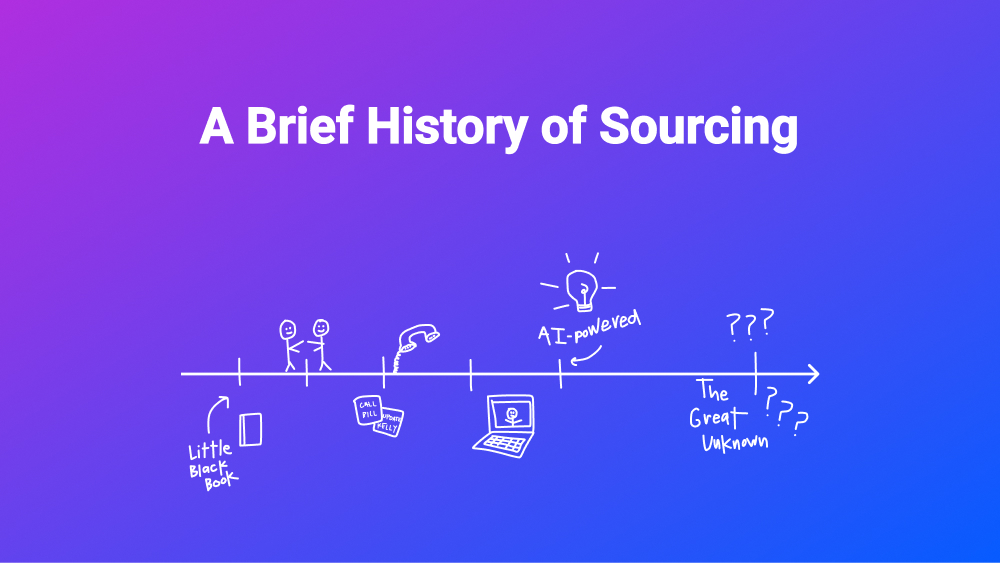The Reality of the Labor Market in 2024: What Recruiters Need to Know

In a rapidly evolving labor market, staying informed is crucial for recruiters and HR professionals. In a recent conversation with Mallory Vachon, Chief Economist at LaborIQ, we sought to shed some light on the current state of the labor market in 2024 — and what it means for recruiters.
Here are some key insights on the state of hiring in 2024 from the conversation:
Understanding the labor market dynamics
Vachon emphasized the importance of real-time compensation data in today's volatile job market. Unlike traditional lagged salary surveys, LaborIQ provides recommended salaries based on current market conditions, allowing organizations to benchmark pay accurately and compete for talent effectively."Over the last couple of years, we've seen compensation and hiring trends move at a pace we've never seen before," said Vachon. "Our data keeps up with these changes better than traditional methods, providing a more accurate reflection of what’s needed to pay in today's market."
The challenges of lagged data
Traditional salary surveys often present outdated information, as Vachon highlighted. These surveys can take 12 to 18 months to compile, making them less reliable in a fast-changing market. LaborIQ's approach involves continuous data updating, ensuring the recommendations reflect current conditions and are location-specific."When you look at some crowdsourced public data sources, you see a lot of big tech companies. This data might not be representative of the market, and it's often outdated," Vachon noted. "We provide real-time recommendations based on the latest data, considering factors like local unemployment rates and demand for specific skills."
The impact of economic shifts
The labor market has experienced significant shifts, particularly in specific sectors. In 2021 and 2022, rapid hiring and high turnover rates led to increased compensation demands. However, as hiring slows, turnover rates have begun to stabilize, reducing the pressure on wage growth."Fewer businesses are hiring, so there are fewer opportunities to jump to," Vachon explained. "This has brought wage growth down to around 4%, still outpacing inflation, which is good news for employees."
Navigating sector-specific trends
The labor market's recovery has been uneven across sectors. While healthcare and social assistance have seen significant job gains, the private sector, particularly tech and professional services, has experienced slower growth. This has implications for recruiters in these industries."Job gains have really been concentrated in a few industries. In June, 75% of the 200,000 jobs added were in government, healthcare, or social assistance," Vachon observed. "In the private sector, many industries are just treading water."
Adapting to the new normal
For HR and recruiting teams, adapting to these changes is crucial. The rise in unemployment rates, particularly among white-collar roles, presents both opportunities and challenges. Recruiters might find more active candidates but face longer times to fill open roles due to slower hiring rates."The unemployment rate has ticked up to 4.1%, rising from 3.7% in January. This means more active candidates in the market, but it's also taking longer to fill roles as fewer businesses are hiring," Vachon pointed out.
Long-term talent shortage and AI
Despite the current cooling of the labor market, a long-term talent shortage looms due to demographic shifts. Baby boomers retiring and a relatively small increase in the under-18 population indicate a future scarcity of experienced workers. AI might help mitigate this shortage by automating high-volume roles and supporting workforce efficiency."From 2000 to 2020, the over-65 population increased by about 21 million, while the under-18 population grew by less than a million," Vachon noted. "AI can help alleviate some of this talent shortage, but organizations will still need to focus on succession planning and training the next generation."
Conclusion
In conclusion, the labor market in 2024 presents a complex landscape for recruiters. Staying informed with real-time data, understanding sector-specific trends, and preparing for long-term demographic shifts are essential strategies for success. As Vachon advised, "Staying on top of compensation trends and adapting to market conditions is crucial to attracting and retaining top talent."For more insights and updates on the labor market, follow Mallory Vachon and LaborIQ on LinkedIn and subscribe to their bi-monthly newsletter.This blog post provides a comprehensive overview of the labor market in 2024, offering valuable insights for recruiters and HR professionals. By leveraging real-time data and understanding the broader economic context, organizations can navigate the challenges and opportunities of the current job market effectively.Want to learn more about this topic, or prefer to listen to your news? Check out Episode 113: The Current State of Labor and Compensation ft. Mallory Vachon of our Becoming a Hiring Machine podcast.
Become a hiring machine
Ready to see for yourself how Loxo can transform your recruitment workflow and make you more efficient than ever before? We thought you might be.



